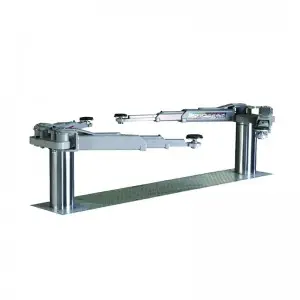If you’re someone who loves tinkering with your car, you’re going to need a reliable and sturdy lift to keep your car elevated. An inground lift is a popular option among car enthusiasts and professionals alike because it provides easy access to the underside of the car. If you’re contemplating getting an inground lift installed in your garage, this article will help you understand the advantages and disadvantages of this type of lift.
Advantages
1. Space-saving: One of the most significant advantages of installing an inground lift is that it is space-saving. Unlike a traditional lift that requires additional space above the ground, an inground lift is installed flush with the ground. This means that they don’t take up any overhead space in the garage, and you can park your car over them when they aren’t in use.

The Advantages and Disadvantages of Installing an Inground Lift for Your Car
2. Safer: Inground lifts are known for being safer than their above-ground counterparts. This is because the four posts on an above-ground lift are prone to sway since they aren’t connected to anything. On the other hand, an inground lift is anchored firmly to the foundation of your garage.
3. Convenient: Inground lifts are quite convenient to use. Once you park your car over the lift, you don’t have to move the car around to access the undercarriage. Instead, all you have to do is lower the lift until you have access to the underside of the car. This is especially convenient if you’re working on a car that weighs several thousand pounds.
4. Environmentally Friendly: An inground lift is much more environmentally friendly than a traditional lift, mostly because it doesn’t require any additional energy sources such as electricity or hydraulic oil.

The Advantages and Disadvantages of Installing an Inground Lift for Your Car
Disadvantages
1. Installation Costs: The installation costs of an inground lift can be quite high. The cost of installation can range between $10,000 to $20,000, depending on the type of lift and the complexity of installation.

The Advantages and Disadvantages of Installing an Inground Lift for Your Car
2. Maintenance: Even though inground lifts don’t require a lot of maintenance, they still require periodic inspections. This includes checking the lift’s hydraulic and electrical systems, as well as inspecting the lift’s structure for any signs of corrosion.
3. Environmental Considerations: Installing an inground lift requires cutting into the concrete floor of your garage, which can release harmful dust and debris into the air. Some garages may also require environmental remediation before installation.
4. Lack of Flexibility: An inground lift is permanently installed and is not easy to relocate once installed. This means that if you move houses, you’ll have to leave the inground lift behind.
Conclusion
Installing an inground lift in your garage has many advantages, such as space-saving, safety, convenience, and environmental-friendliness. However, considering the high installation cost and the possible environmental considerations, it’s important to carefully weigh the advantages and disadvantages before making a final decision. Ultimately, choosing the right type of lift depends on your garage’s size, budget, and needs.car quick lift
